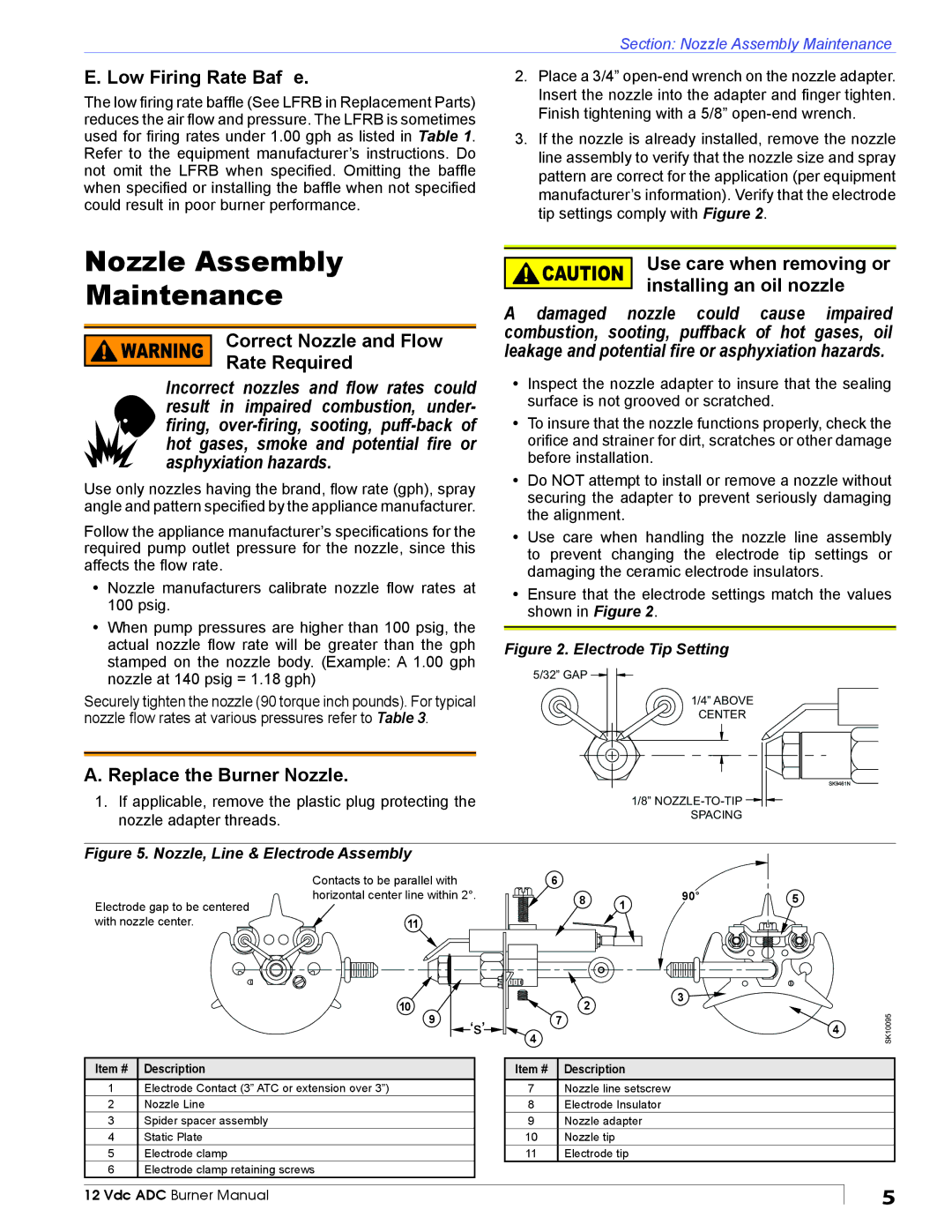ADC specifications
Beckett Advanced Digital Control (ADC) represents a significant advancement in the world of heating technology, offering homeowners enhanced efficiency, control, and convenience in managing their heating systems. This innovative technology is designed to integrate seamlessly with various heating solutions, including oil and gas furnaces, boilers, and water heaters.One of the main features of Beckett ADC is its advanced control algorithms, which enable precise modulation of fuel delivery and combustion processes. This modulation not only optimizes energy consumption but also minimizes emissions, ensuring compliance with environmental standards. The ADC system intelligently adjusts the fuel flow based on the heating demands of the home, thus achieving a high degree of efficiency.
The user interface of the Beckett ADC is another standout characteristic. It features a digital display that provides real-time feedback on system performance, making it easy for homeowners to monitor their heating systems. The interface is designed to be user-friendly, allowing for quick adjustments and settings changes without technical expertise.
In terms of technology, Beckett ADC utilizes sophisticated sensors that monitor various parameters, including temperature, pressure, and airflow. This data is constantly analyzed to ensure optimal operation. The system also incorporates advanced ignition technology, which allows for a quick and reliable start, thus enhancing the overall user experience.
Another key characteristic of Beckett ADC is its compatibility with smart home systems. Many models are designed to connect with Wi-Fi and can be integrated into home automation platforms. This allows homeowners to control their heating systems remotely, enabling features such as scheduling, temperature adjustments, and real-time monitoring from a smartphone or tablet.
Additionally, Beckett ADC is known for its durability and low maintenance requirements. The design incorporates high-quality materials that resist wear and tear, allowing for a longer lifespan and reliable operation over time. This durability ensures that homeowners can enjoy an efficient heating system without the frequent need for repairs or replacements.
In summary, Beckett ADC stands out in the heating industry for its advanced digital control capabilities, user-friendly interface, sophisticated sensor technology, smart home compatibility, and durable design. These features come together to create an efficient, convenient, and environmentally friendly heating solution for modern homes, underscoring Beckett's commitment to innovation and quality in heating technology.

